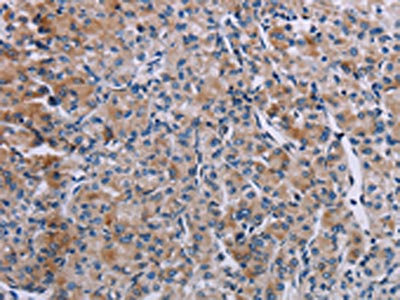
The image on the left is immunohistochemistry of paraffin-embedded Human prostate cancer tissue using CSB-PA068591(KDM4D Antibody) at dilution 1/60, on the right is treated with fusion protein. (Original magnification: x200)
KDM4D Antibody
CSB-PA068591
ApplicationsELISA, ImmunoHistoChemistry
Product group Antibodies
ReactivityHuman, Mouse, Rat
TargetKDM4D
Overview
- SupplierCusabio
- Product NameKDM4D Antibody
- Delivery Days Customer20
- ApplicationsELISA, ImmunoHistoChemistry
- CertificationResearch Use Only
- ClonalityPolyclonal
- ConjugateUnconjugated
- Gene ID55693
- Target nameKDM4D
- Target descriptionlysine demethylase 4D
- Target synonymsJMJD2D, lysine-specific demethylase 4D, [histone H3]-trimethyl-L-lysine(9) demethylase 4D, jmjC domain-containing histone demethylation protein 3D, jumonji domain containing 2D, jumonji domain-containing protein 2D, lysine (K)-specific demethylase 4D
- HostRabbit
- IsotypeIgG
- Protein IDQ6B0I6
- Protein NameLysine-specific demethylase 4D
- Scientific DescriptionJMJD2D (Jumonji domain-containing protein 2D), also known as JHDM3D or KDM4D, is a 520 amino acid protein that belongs to the JHDM3 histone demethylase family. Localized to the nucleus, JMJD2D functions as a histone demethylase that removes specific methyl residues from Histone H3, thereby playing a crucial role in the histone code. JMJD2D binds iron as a cofactor and contains one JMJC domain and one JMJN domain, both of which are thought to exhibit enzymatic activity during chromatin remodeling events. In addition, JMJD2D forms a complex with the ligand-bound form of the androgen receptor (AR) and, through this interaction, activates AR expression. Overexpression of AR is associated with prostate cancer, suggesting that, via its ability to upregulate AR, JMJD2D may be involved in carcinogenesis.
- ReactivityHuman, Mouse, Rat
- Storage Instruction-20°C or -80°C
- UNSPSC41116161




